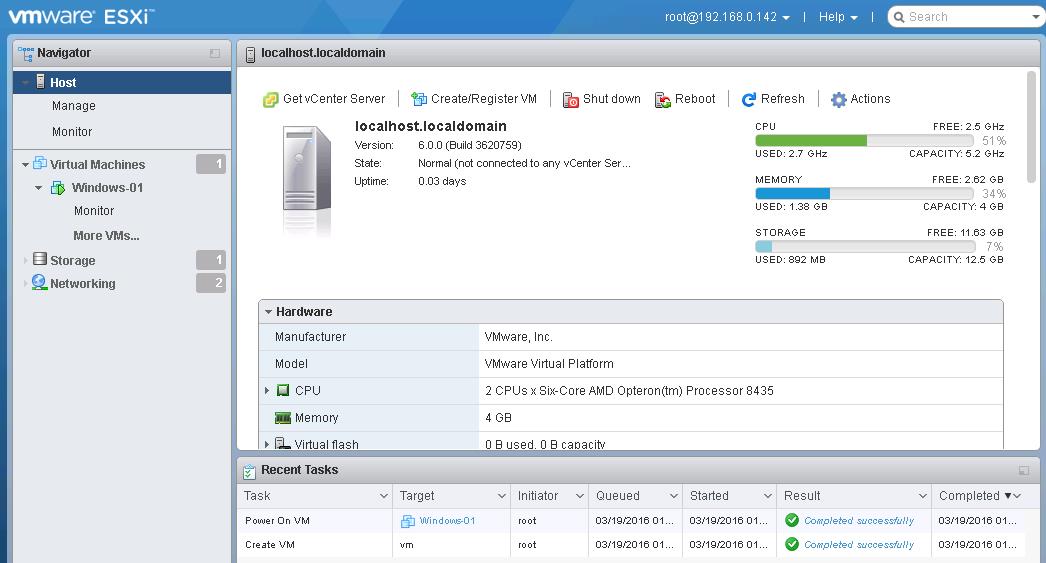Fix – vSphere Update Manager fails to download patches Posted on February 1, 2016 by Luca Sturlese This is a quick article to document a fix to an issue I came across the other day with vSphere Update Manager (VUM) failing to download patches. Deploying VMware Update Manager 6.0 Update 2. March 23, 2016 by Daniel. With the release of vSphere 6.0 Update 2 I needed to update my hosts! This method will also work going from 6.0.0 to 6.0 U2. First you need to download a ESXi image. If you are using HP or Dell I would advise using their customized ESXi images. ESXi601 intended to be applied to/on top of ESXi 6.0 Update 3. ESXi602 intended to be applied to/on top of ESXi 6.0 Update 1. ESXi603 intended to be applied to/on top of ESXi 6.0 Update 2, this is called out as Express Patch 7c, so I assume the Update 1 version is Express Patch 7b?
- Vmware Esxi 6 5 Vmkernel
- Vmware Esxi 6 5
- Vmware Esxi 6 Update 2 Download
- Vmware Esxi 6.0 Update 1b Download
- Vmware Esxi 6.0 Update Manager Download
In this post, you will learn how to install patches and upgrade ESXi hosts using esxcli commands. I’ll start by installing a bug-fix patch followed by an ESXi OS version upgrade using a so called offline bundle. The offline upgrade option is particularly useful when vSphere Update Manager is not deployed in your environment.
Requirements
Vmware Esxi 6 5 Vmkernel
For this demo, I’ll be using WinSCP. Among other things, you can use it to upload files such as vib packages to ESXi’s file-system. For this to work, you need SSH enabled on the ESXi host so you also need to ensure that network port 22 is not being blocked by any firewall en route. I’m also using putty to SSH to the ESXi host so I can work from shell.
Installing a patch
There are 6 steps to installing patches on ESXi.
Step 1 – Download the patch. I’ve chosen to download a bug fix as described in KB214164. You can see this patch selected as shown in Figure 1.
Figure 1 – Downloading patches from my VMware
Step 2 – Upload the patch to the ESXi host using WinSCP or similar. You can also use the vSphere client to upload to a datastore using the Upload File button
–
I do however prefer the former method since it gives you more control on where to place the uploaded file and allows you to resume broken or paused uploads. Using WinSCP could not, in fact, be any easier. Just create a new connection using the ESXi’s host IP address and credentials. Then just drag the file from the source folder (left hand pane) to the destination folder (right hand pane). Figure 3 shows the process of copying a patch from a local folder to one created on a datastore.
Figure 3 – Using WinSCP to transfer files to an ESXi host

Step 3 – Establish an SSH connection using putty or otherwise.
Step 4 – Place the host in maintenance mode. To this, either use the vSphere client or run the following command from shell.
Figure 4 – Placing a host in maintenance mode
Step 5 – Install the patch
This is where we use the esxcli software vib command to install the patch. This step warrants some more detail. The esxcli software vib command takes on two installation parameters these being update and install. The difference between the two is important since update DOES NOT overwrite existing files with a higher version than those being installed. The install parameter on the other hand doesn’t really care and bulldozes its way through overwriting conflicting files regardless of version. Bottom-line is, be very careful when you use the install option. To be on the safe side, it’s a good idea to refer to any KB article released for the patch or update in question. For further information make sure to check this out.
For this example, I’m using the command below to apply the patch previously downloaded. The path specified the -d parameter will, of course, vary according to the datastore or folder to which you copied the update file. Keep in mind also that you must specify the full path to the patch or update that you wish to install.